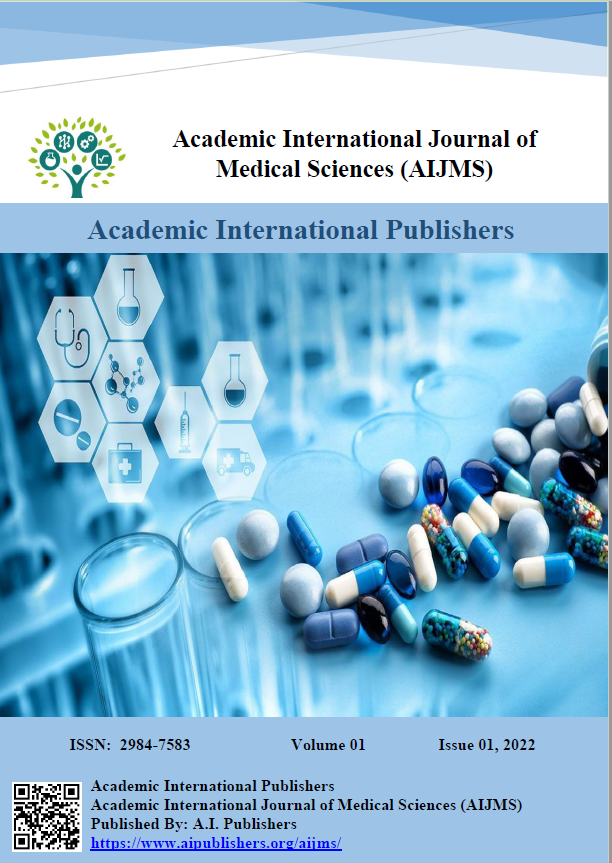Study on Nourseothricin and Its Activity Against Drug-Resistant Bacteria
DOI:
https://doi.org/10.59675/M216Keywords:
Nourseothricin; Antimicrobial resistance; MRSA; ESBL; WHO priority pathogens; Minimum inhibitory concentration.Abstract
Background: A global problem is created by the emergence of antimicrobial resistance, necessitating the development of new antimicrobials to ensure effectiveness. “The antimicrobial activity of nourseothricin against clinically significant drug-resistant bacterial pathogens is reported here, including methicillin-resistant Staphylococcus aureus (MRSA), extended-spectrum beta-lactamase (ESBL)” producing Escherichia coli, carbapenem-resistant “Klebsiella pneumoniae,” and vancomycin-resistant Enterococci (VRE). Methods: The antimicrobial activity of nourseothricin was evaluated through the use of standard microbiological assays. Minimal Inhibitory Concentrations (MICs) were determined by the broth microdilution method, following the guidelines of the Clinical and Laboratory Standards Institute (CLSI). Sixty clinical isolates were included: MRSA (n=20), ESBL-producing E. coli (n=15), carbapenem-resistant K. pneumoniae (n=15), and VRE (n=10). Time-kill kinetics were assessed at concentrations of 0.5×, 1×, 2×, and 4× MIC. Results: Potent activity was displayed by nourseothricin against all tested strains, with MIC90 values of 4 μg/mL for MRSA, 8 μg/mL for ESBL E. coli, 16 μg/mL for carbapenem-resistant K. pneumoniae, and 8 μg/mL for VRE. Rapid bactericidal activity was demonstrated during time-kill studies, showing a ≥3-log₁₀ reduction in viable cell counts within 4.5 hours for MRSA and 5.2 hours for ESBL E. coli when exposed to 4× MIC. MIC values were found to be highly correlated with inhibition zone diameters (r = 0.89, p < 0.001), and reproducible activity was observed against both gram-positive and gram-negative resistant strains”. Conclusions: Significant potential for nourseothricin as a broad-spectrum antimicrobial against traditionally drug-resistant pathogens is indicated by the findings of this study. Rapid bactericidal activity, particularly against WHO priority pathogens, and a well-characterized mechanism of action suggest therapeutic applications. These results warrant further in vivo studies and clinical trials to evaluate nourseothricin’s potential for treating drug-resistant bacterial infections.
References
Murray CJ, Ikuta KS, Sharara F, Swetschinski L, Aguilar GR, Gray A, Han C, Bisignano C, Rao P, Wool E, Johnson SC. Global burden of bacterial antimicrobial resistance in 2019: a systematic analysis. The lancet. 2022 Feb 12;399(10325):629-55.
Wilson DN. The A–Z of bacterial translation inhibitors. Critical reviews in biochemistry and molecular biology. 2009 Dec 1;44(6):393-433.
Blair JMA, Webber MA, Baylay AJ, et al. Molecular mechanisms of antibiotic resistance. Nat Rev Microbiol. 2015;13(1):42-51.
Krause KM, Serio AW, Kane TR, Connolly LE. Aminoglycosides: An Overview. Cold Spring Harb Perspect Med. 2016;6(6):a027029.
Lin J, Zhou D, Steitz TA, et al. Ribosome-Targeting Antibiotics: Modes of Action, Mechanisms of Resistance, and Implications for Drug Design. Annu Rev Biochem. 2018; 87:451-78.
Arenz S, Wilson DN. Bacterial Protein Synthesis as a Target for Antibiotic Inhibition. Cold Spring Harb Perspect Med. 2016;6(9): a025361.
Wright GD. Antibiotic Adjuvants: Rescuing Antibiotics from Resistance. Trends Microbiol. 2016;24(11):862-71.
Tyers M, Wright GD. Drug combinations: a strategy to extend the life of antibiotics in the 21st century. Nat Rev Microbiol. 2019;17(3):141-55.
Santajit S, Indrawattana N. Mechanisms of Antimicrobial Resistance in ESKAPE Pathogens. Biomed Res Int. 2016;2016:2475067.
Tacconelli E, Carrara E, Savoldi A, et al. Discovery, research, and development of new antibiotics: the WHO priority list of antibiotic-resistant bacteria and tuberculosis. Lancet Infect Dis. 2018;18(3):318-27.
Goodsell DS, Zardecki C, Di Costanzo L, et al. RCSB Protein Data Bank: Enabling biomedical research and drug discovery. Protein Sci. 2020;29(1):52-65.
research and drug discovery. Protein Sci. 2020;29(1):52-65.
Durand GA, Raoult D, Dubourg G. Antibiotic discovery: history, methods and perspectives. Int J Antimicrob Agents. 2019;53(4):371-382.
Polikanov YS, Steitz TA, Innis CA. A proton wire to couple aminoacyl-tRNA accommodation and peptide-bond formation on the ribosome. Nat Struct Mol Biol. 2014;21(9):787-793.
Krause KM, Serio AW, Kane TR, Connolly LE. Aminoglycosides: An Overview. Cold Spring Harb Perspect Med. 2016;6(6):a027029.
Tacconelli E, Carrara E, Savoldi A, Harbarth S, Mendelson M, Monnet DL, et al. Discovery, research, and development of new antibiotics: the WHO priority list of antibiotic-resistant bacteria and tuberculosis. Lancet Infect Dis. 2018;18(3):318-327.
Theuretzbacher U, Bush K, Harbarth S, Paul M, Rex JH, Tacconelli E, et al. Critical analysis of antibacterial agents in clinical development. Nat Rev Microbiol. 2020;18(5):286-298.
WHO. 2020 antibacterial agents in clinical and preclinical development: an overview and analysis. Geneva: World Health Organization; 2021. License: CC BY-NC-SA 3.0 IGO
Rice LB. Federal funding for the study of antimicrobial resistance in nosocomial pathogens: no ESKAPE. J Infect Dis. 2008;197(8):1079-81.
Boucher HW, Talbot GH, Bradley JS, Edwards JE, Gilbert D, Rice LB, et al. Bad bugs, no drugs: no ESKAPE! An update from the Infectious Diseases Society of America. Clin Infect Dis. 2009;48(1):1-12.
Downloads
Published
Issue
Section
License
Copyright (c) 2024 Academic International Journal of Medical Sciences

This work is licensed under a Creative Commons Attribution 4.0 International License.





